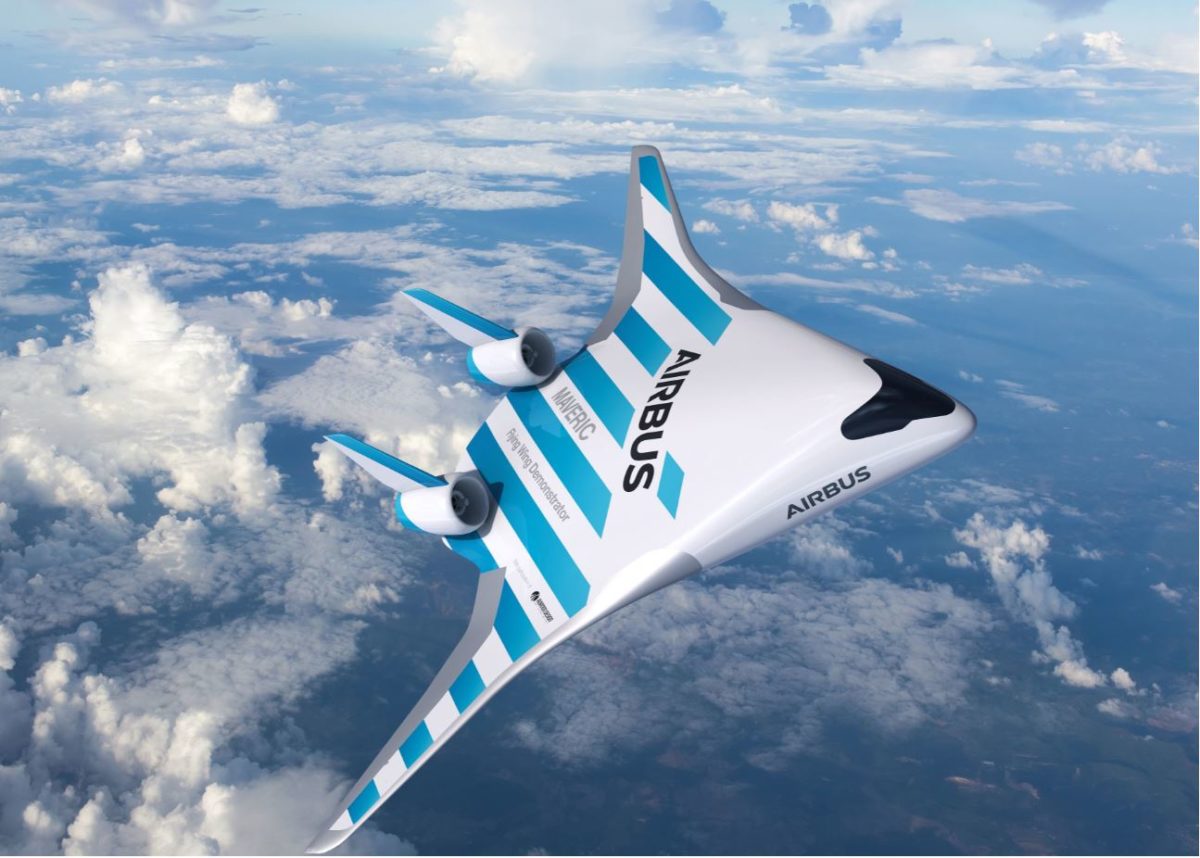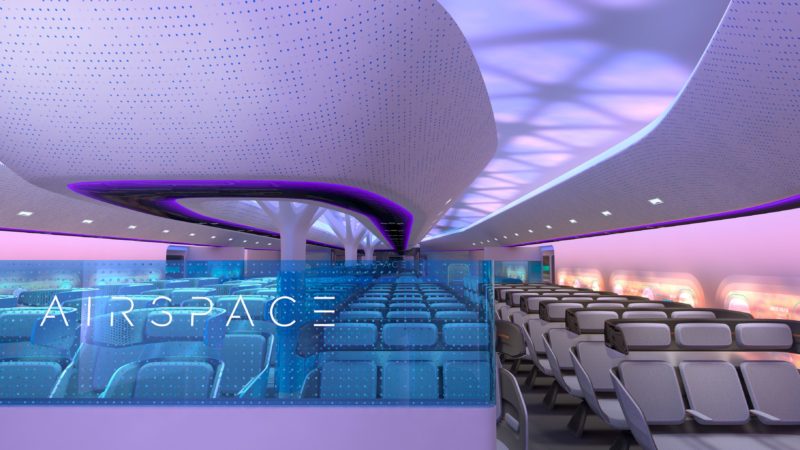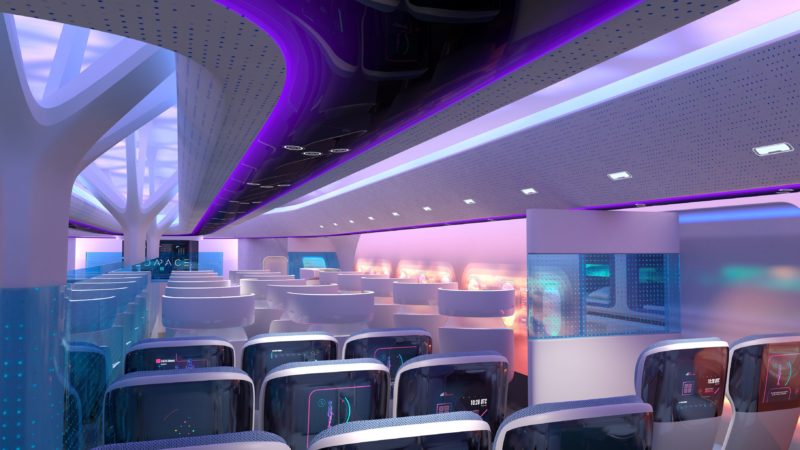With the aim of drastically reducing carbon emissions, to meet growing environmental guidelines, Airbus has unveiled their blended wing aircraft prototype at the 2020 Singapore Airshow.
Named MAVERIC (Model Aircraft for Validation and Experimentation of Robust Innovative Controls) the aircraft boasts a bold new design form, in the shape of a blended fuselage and wing with high-mounted engines.
Rather than being a computer rendering, Airbus has actually been secretly testing a real MAVERIC test frame, since June 2019, at an undisclosed location in central France. Testing of the scaled prototype will conclude sometime in the second quarter of 2020, where Airbus will then assess the data collected and refine their work.
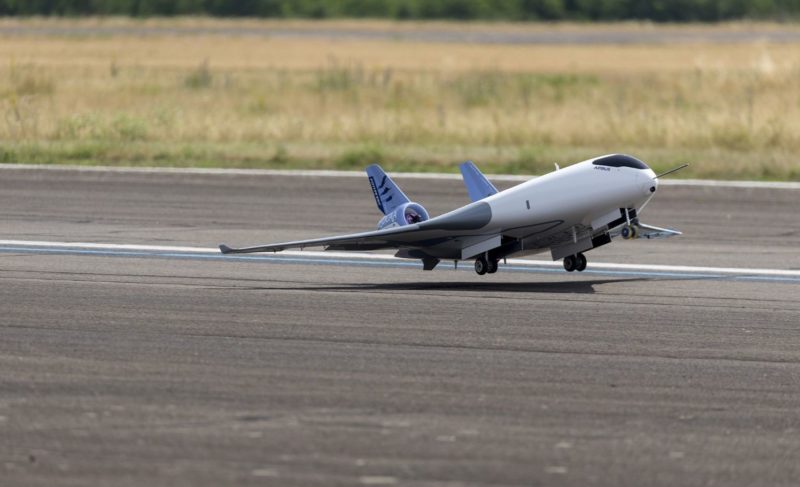
In its scaled form MAVERIC comes in at two metres long and 3.2 metres wide, with a total surface area of 2.25 metres squared. Airbus says the disruptive design of the aircraft has the potential to reduce fuel consumption by up to 20 percent, compared to today’s single-aisle aircraft.
Although the majority of the fuel burn reduction comes from the blended design, the aircraft also allows for new propulsion types and integration; including the position shown in the photos.
Whilst the idea of having engines mounted in the twin vertical stabilisers has already raised questions about safety, it is important to note that this is a basic prototype with the aim to determine aerodynamic performance and its rough capabilities.
Thanks to the design of the aircraft, Airbus has been able to propose a wildly new cabin concept; including an overall wider and more spacious seating environment, more aisles and more space for new features.
Cabin mock-ups show technological advancements in products we already have today, including newer seats likely based on their smart cabin platform, advanced lighting zones to increase comfort and cabin walls with artificial windows that can display flight information.
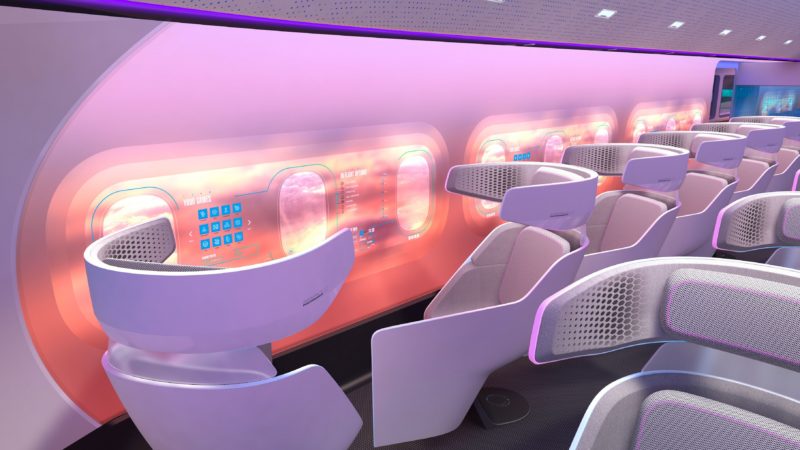
“Airbus is leveraging emerging technologies to pioneer the future of flight. By testing disruptive aircraft configurations, Airbus is able to evaluate their potential as viable future products. Although there is no specific time line for entry-into-service, this technological demonstrator could be instrumental in bringing about change in commercial aircraft architectures for an environmentally sustainable future for the aviation industry.”
Jean-Brice Dumont, EVP Engineering Airbus
Despite no set time for entry into service of an aircraft of this design, the next wave of short to medium haul aircraft is expected in the early to mid 2030s; meaning components from MAVERIC could be 10 to 15 years away from carrying passengers.
The rough design of blended wing/fuselage aircraft has been around since the 1940s, where Germany successfully built the Horton Ho 229. Other modern developments include the Boeing X-48, the Northrop Grumman B-2 Spirit and the upcoming B-21 Raider.

Whilst the prospects of such design mostly look facilitating to the everyday viewer, various challenges need to be overcome; including the controls for such an aircraft, as blended designs are notorious for being hard to control, requiring complex fly-by-wire systems and a sophisticated set of balanced control surfaces.
Another issue that has to be overcome is sensations of movement. Since passengers will be seated further out from the centre of the aircraft, passengers will move a greater distance during turns. The result of this is increased chances of motion sickness and greater physical demand during busy stages of flight, such as takeoff and landing.
As well as MAVERIC, Airbus is also working on other programs aimed towards the environment; including the E-FAN X hybrid-electric propulsion demonstrator, Fello’fly (_v-shaped formation flight) and ATTOL (Autonomous Taxi Takeoff and Landing) which was recently shown on an A350.
By harnessing the increased power of computers and material innovations, Airbus hopes to create a disruptive set of new technologies ready to be used for the next generation of aircraft; meaning the conventional tube and wing design may not be around in the next 20-30 years.
What are your thoughts on this development?


